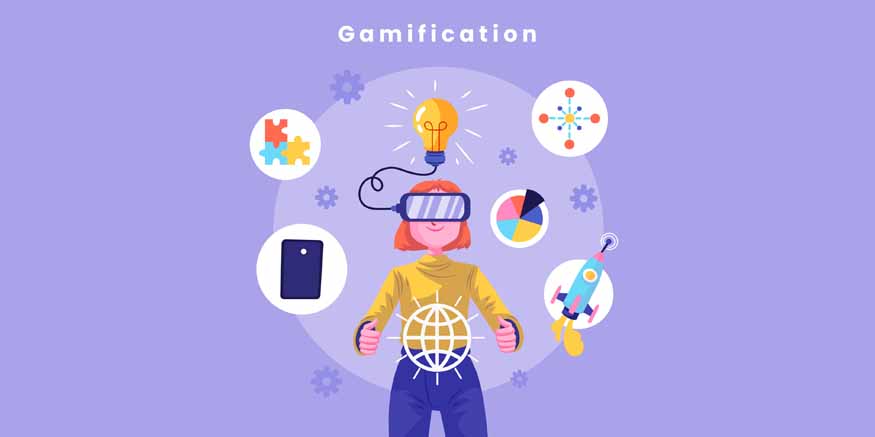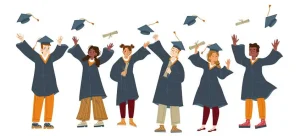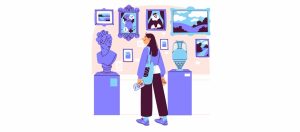How Gamification Improves Student Retention in 2025

In a radical move, Indian schools and edtech platforms are increasingly turning to gamification in education as a strategic innovation to boost student retention in 2025.
With student engagement always being a challenge, gamified systems are being adopted to transform tedious lessons into interactive, motivating experiences. But how exactly does gamification work in the classroom, and what evidence supports its effects on retention?
What is Gamification (and Game-Based Learning)?
Before exploring its impact, it’s helpful to clarify what gamification really means in educational settings. In essence, gamification is the integration of game design elements. Think of points, badges, leaderboards, challenges, and feedback loops; now think of incorporating these aspects into non-game contexts like learning, to encourage desired behaviours and sustained engagement.
On the other hand, a closely related aspect is game-based learning, where learning content itself is delivered through actual games or simulations. While gamification overlays game mechanics on tasks, game-based learning embeds curriculum inside a game environment. Together, they form a powerful duo in modern pedagogical strategies.
When educators ask “what is gamification?”, the answer often emphasises that it’s not about turning everything into a game, but rather borrowing engaging, motivational structures to nudge learners toward educational goals.
Why Retention Matters and How Gamification Helps
In Ebbinghaus’ Forgetting Curve (1885, replicated in later studies), we learn that without review, learners forget ~50% of new information within 1 hour. After 24 hours, retention drops to about 30%. After a week, retention can be as low as 10–20%, unless reinforced.
Hence, student retention is more than just keeping students enrolled; it refers to their ongoing commitment to learning, completion of modules, and avoiding dropout or disengagement over a term or course. Especially in India, where competition, pressure, and regional disparities challenge sustained learning, strategies that strengthen retention are crucial.
Gamification in learning addresses this by:
- Providing immediate feedback: Students receive real-time responses to their actions, helping them correct mistakes and stay motivated.
- Rewarding incremental progress: Point systems, badges, or levels mark progress and give learners mini-victories along the way.
- Introducing healthy competition and collaboration: Leaderboards or group challenges stimulate peer learning and social motivation.
- Structuring scaffolding and mastery paths: Learners are guided through levels of increasing difficulty, providing a sense of growth rather than abrupt jumps.
- Encouraging exploration and replay: Games naturally invite trial, retries, experimentation, which reinforces learning through game-based learning.
In a classroom adopting these methods, students are less likely to drop off because the journey is continually reinforced with small rewards and a sense of momentum.
Evidence & Effects of Gamification in Education
Results from global and Indian studies increasingly demonstrate the effects of gamification in education, particularly in retention and performance.
According to a blog by Lighthouse Learning, learners exposed to interactive, gamified instruction scored 14% higher on skill-based assessments. This underscores how gamification not only engages but also strengthens learning outcomes.
Other empirical studies have shown higher course completion rates, lower dropout rates, and improved motivation when gamification is well-designed. Among the observed benefits is that gamification reduces monotony, enables personalised pacing, and aligns tasks with learner interests.
In India, several edtech start-ups now include gamified quizzes, leaderboards, streaks, and immersive modules. Many schools, especially in urban centres, are experimenting with interactive lessons, digital platforms, and classroom apps that reward progress. These deployments validate that retention improves when learners feel continually “in the game”.
Gamification Strategies in Education
To translate this into classroom action, here are effective gamification strategies in education, particularly relevant to Indian schools:
1. Points, Badges, Leaderboards (PBL)
Assign points for completing exercises, encourage badges for milestones (e.g., “Master of Algebra”), and show leaderboard ranks. Care must be taken that competition remains healthy and inclusive.
2. Progress Bars & Levelling Up
Show visual progress bars for modules. Let students “level up” by achieving scores in quizzes and unlocking more advanced tasks.
3. Quests, Challenges & Missions
Frame lessons as missions: “Explore three examples of chemical reactions,” “Solve this puzzle to decode a historical message.” Students unlock the next mission after completion.
4. Storytelling & Narrative Framing
Embed lessons in story arcs. For instance, a geography module may become a journey across river basins, with tasks as “missions” to solve local challenges.
5. Peer Competition & Cooperative Play
Use team challenges or group leaderboards. Collaboration can improve retention as students help one another.
6. Time vs Strategy Modes
Offer timed challenges for quick thinking, or strategic untimed puzzles for deeper thinking, catering to multiple learner types.
7. Streaks and XP (Experience Points)
Reward consecutive days of engagement (a “streak”) and accumulate XP to unlock features or privileges in the platform.
8. Adaptive Difficulty & Personalisation
Automatically adjust difficulty based on student performance so the challenge stays in the “zone of proximal development,” avoiding boredom or frustration.
Implementation of these gamification strategies in education must be coupled with pedagogical intention, i.e., aligning challenges with learning goals, inserting reflection and debrief, and preventing extrinsic rewards from overshadowing intrinsic motivation.
Challenges of Gamification in the Indian Context
While exciting, gamification in Indian classrooms faces hurdles:
- Digital divide and access: Many rural or underfunded schools lack access to devices or reliable internet connectivity. Gamified modules must be usable offline or on low-cost devices.
- Teacher readiness: Teachers may not immediately be comfortable adopting gamified models or curating meaningful game tasks. Professional development is essential.
- Gimmick risk: Poorly designed gamification turns into superficial point-chasing rather than deep learning. The mechanics must align with the curriculum and conceptual depth.
- Assessment alignment: Board exams and conventional metrics seldom reward what gamified modules emphasise (process, thinking, retries). Bridging assessment systems to gamified outcomes is complex.
- Sustainability: Maintaining motivation over months demands fresh content, updates, narrative twists, and continuous design input.
Effective adoption in India will require hybrid models, where gamification complements rather than replaces traditional methods, particularly in schools with resource constraints.
Steps for Indian Schools to Adopt Gamification for Retention
Here is a suggested roadmap for Indian schools wanting to try gamification:
- Pilot small modules: Start with a single subject or unit to test student response and teacher workflows.
- Select or build a gamified platform: Use existing tools (Quizizz, Kahoot, Classcraft, Genially) or custom in-house modules.
- Train teachers in design thinking: Focus on how to scaffold tasks, build narrative, assess progress, and manage game mechanics.
- Blend traditional lessons with gamification for reinforcement, revision, quizzes, or exploratory tasks, rather than using it as the sole approach.
- Collect feedback and iterate: Monitor which game elements support retention, drop-off rates, and student reflections, and iterate accordingly.
- Celebrate achievements: Organise inter-class or inter-school gamified competitions to sustain interest.
- Scale gradually: Once pilot success is evident, expand to other subjects or grades, investing in infrastructure and content development as needed.
When pursued thoughtfully, gamification in learning can become a sustained tool for retention rather than just a passing fad.
Billabong High International School (part of Lighthouse Learning) positions itself as a dynamic, innovation-oriented school network offering CBSE, ICSE, IGCSE and Cambridge curricula. Their stated pedagogical approach emphasises inquiry, problem solving, and “learning beyond books”, with state-of-the-art infrastructure and maker labs to support experiential modalities.
While the school’s website does not publicly specify a full gamification programme currently, its emphasis on technology-enabled, inquiry-based learning provides fertile ground for gamification in education. The presence of a Maker Lab indicates a willingness to host interactive, creative, project-based modules that could integrate game elements.
In future, BHIS could adopt point systems, challenge modules, narrative learning paths, or school-wide gamified events, integrating them with their existing inquiry/design thinking frameworks. For students at BHIS, this would translate into more engaging lessons, reinforcement of concepts through play, and higher retention over time.
Schools or parents considering gamification as part of a retention strategy might look to BHIS’s infrastructure, teacher development ethos, and innovation orientation as foundational assets ready to evolve into fully gamified learning environments.













